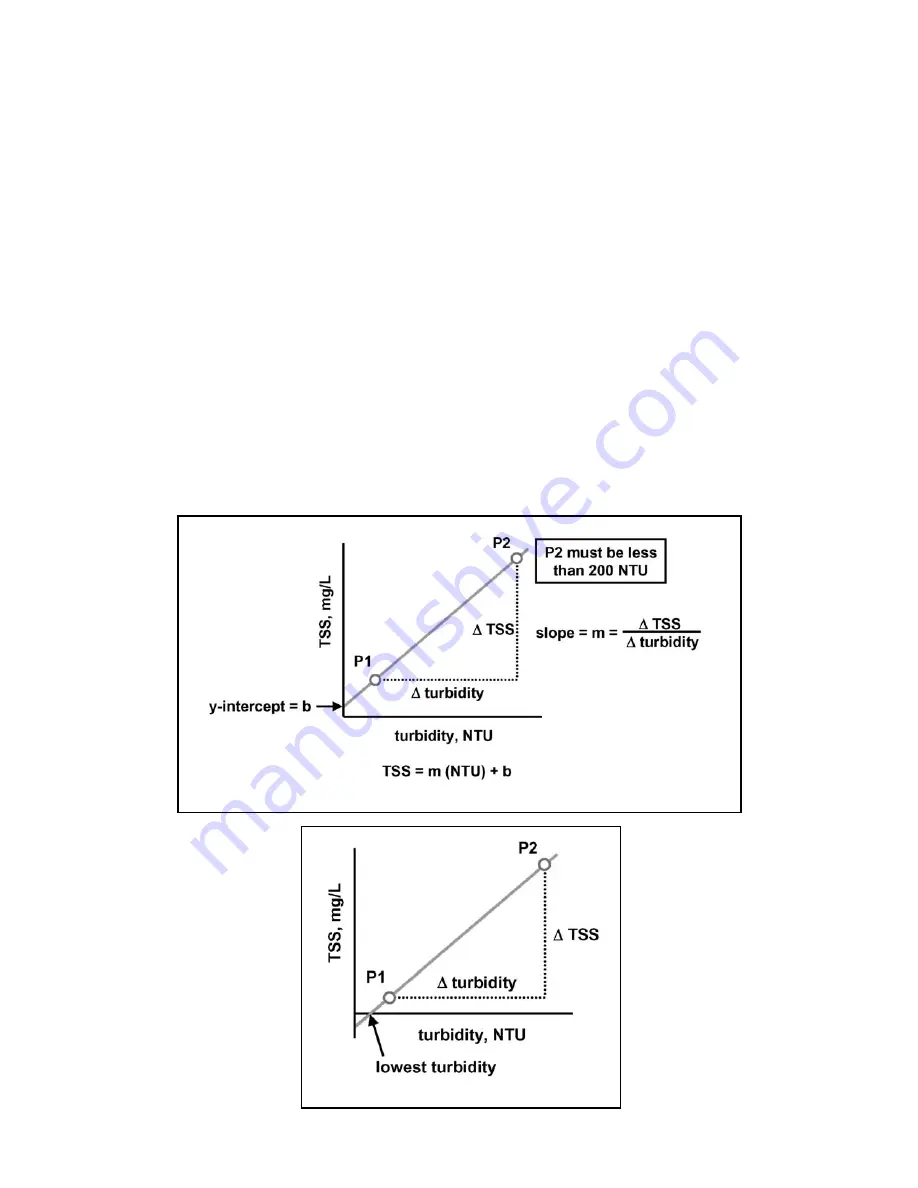
43
FIGURE 6-2. Converting Turbidity to TSS
FIGURE 6-3. Lowest Turbidity (TSS)
6.7 ENTERING A TURBIDITY TO TSS CONVERSION EQUATION
6.7.1 Purpose
The analyzer can be programmed to convert turbidity to a total suspended solids (TSS) reading. There is no fun-
damental relationship between turbidity and TSS. Every process stream is unique. The user must determine the
relationship between turbidity and TSS for his process. The analyzer accepts only a linear calibration curve.
Figure 6-2 shows how the turbidity to TSS conversion works. The user enters two points P1 and P2, and the ana-
lyzer calculates the equation of a straight line between the points. The analyzer then converts all subsequent tur-
bidity measurements to TSS using the equation. It is important to note that if the cause or the source of the tur-
bidity changes, new points P1 and P2 will need to be determined and the calibration repeated.
The accuracy of the measurement depends on how linear the actual relationship between TSS and turbidity is. At
a minimum, the user should confirm linearity by diluting the most turbid sample (P2) and verifying that the new tur-
bidity and TSS point lies reasonably close to the line. Ideally, the dilution should be done with filtered sample, not
deionized water. Deionized water can change the index of refraction of the liquid and can increase or decrease the
solubility of the particles. Therefore, the diluted sample will not be representative of the process liquid. For a more
rigorous procedure for checking linearity and developing values to enter for points P1 and P2, refer to the
Appendix.
After the analyzer has calculated the turbidity to TSS conversion equation, it also calculates the x-intercept (NTU).
See Figure 6-3. If the x-intercept is greater than zero, the analyzer will display that value as the lowest turbidity
reading it will accept. A lower turbidity reading will produce a negative TSS value. If the x-intercept in less than
zero, the screen does not appear.
MODEL CLARITY II
SECTION 6.0
CALIBRATION
















































